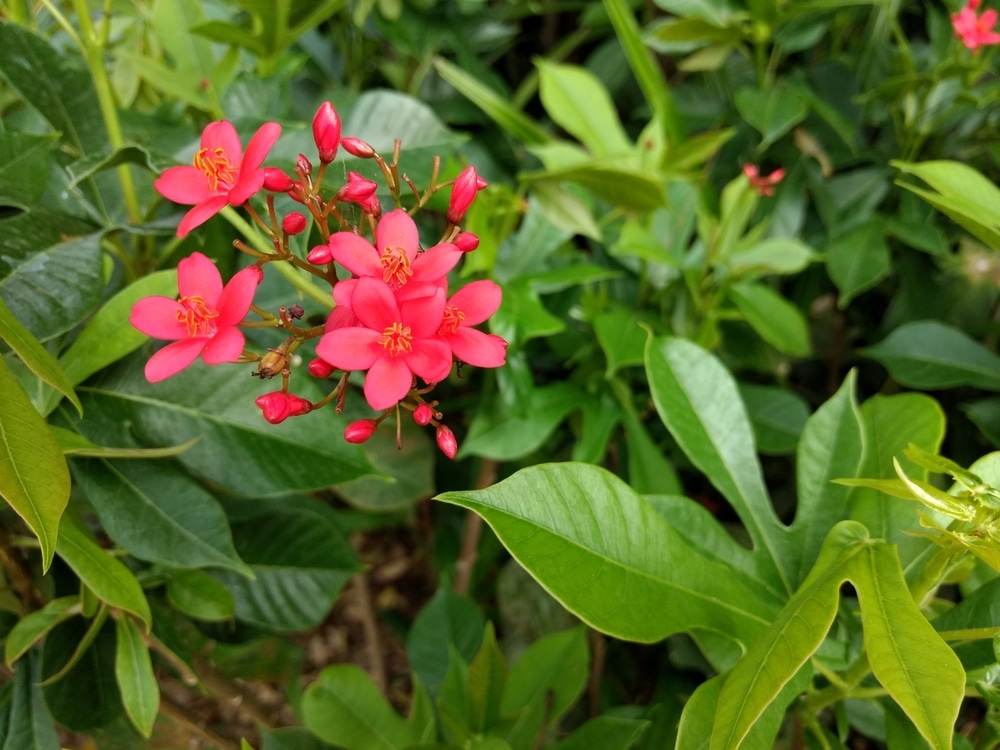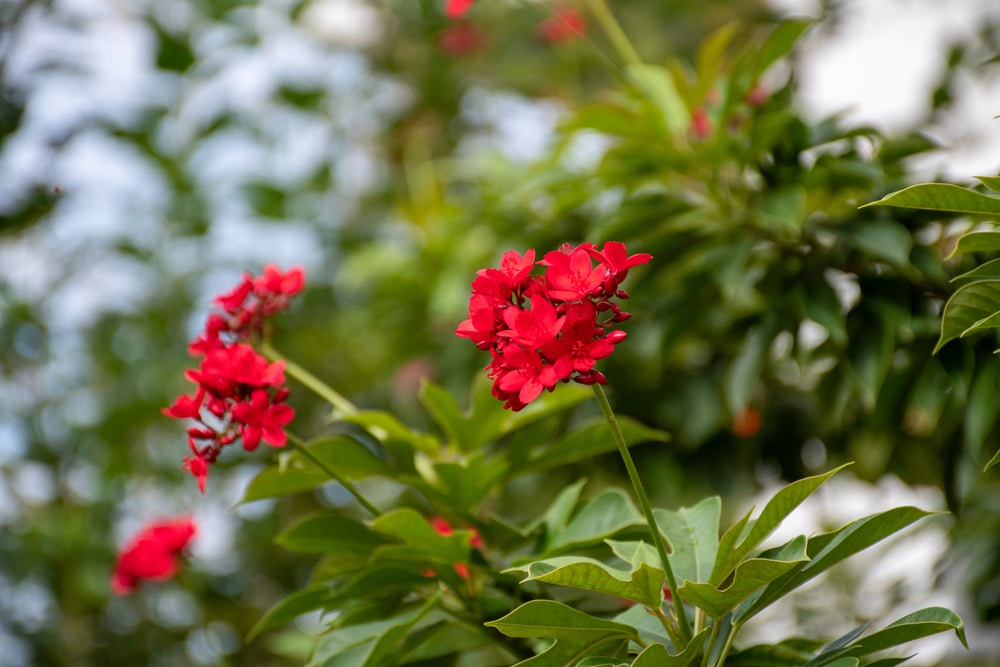The Jatropha Tree plant can be a lovely, environmental addition to pretty much any and all homes that have and can provide it with a suitable environment. Although this indoor plant is not very uncommon, it does have a few more particular requirements that you may not have been aware of. So, here is everything you need to know about the Jatropha Tree plant and how to care for it.

| Botanical Name | jatropha curcas |
| Common Name | Barbados, purging or physic nut |
| Plant Type | Perennial |
| Flower Color | A bright rose like shade of red |
| Size When Mature | Approximately 180 inches in height
Approximately 96 inches in width |
| Bloom Time | Blooms all year around |
| Sun Requirements | Prefers full sunlight but can handle partial shade |
| USDA Hardiness Zones | 9 to 11 |
| Soil PH Range | 6 to 8 |
| Soil Type | Sandy and moist but well drained soil |
| Water Needs | Medium |
| Native Area | Cuba and the west Indies |
What you Need to Know About Jatropha Tree
The Jatropha Tree is a species of flowering plant that is a part of a spurge family that goes by the name of Euphorbiaceae. Moreover, it is known to be native to Cuba and the west Indies.
How to Care for Jatropha Tree
Here’s everything you need to know about growing and caring for a thriving Jatropha Tree.
Light
The Jatropha Tree will do best if it is given a space that can provide it with full access and exposure to the sunlight. That being said, this plant is also somewhat capable of tolerating partial shade. This means that the Jatropha Tree can continue to grow and live if it is placed in a spot that gives it partial shade instead of full sun but it won’t flourish and flower as well as it could.
Water and Soil Needs
The Jatropha Tree is a pretty drought tolerant plant. That being said, it is recommended that you water it approximately three times a week in order for it to reach its full potential.
The Jatropha Tree is not very picky or particular about what type of soil it grows in. This means that it can grow well in most types of soil. Moreover, it can handle soil that has a pH ranging from 6.0 to 8.0.
However,you must ensure that the soil that you provide this plant with is well draining as it cannot grow and flourish if its soil is waterlogged.
Furthermore, the Jatropha Tree tends to do best when it is provided with soil that is loamy and moist.
Temperature Requirements

Fertilizer
The best fertilizer to use on a Jatropha Tree is a granular fertilizer. Moreover, it is best that you always ensure that the granular fertilizer you are using on your Jatropha Tree is high in quality. To add to this, it is preferable that the high quality fertilizer that you are using is one that is high in phosphorus.
In addition to this, it is best that you fertilizer your Jatropha Tree three times a year. You should do it once in the spring, once in the summer and once in the autumn.
Common Diseases
Things such as spider mites, fusarium wilt, powdery mildew, macrophomina app, Ferrisia virgata-Mealy bug and stem borer acan become a potential problem and cause some harm to your Jatropha Tree, just like with most other perennial plants and trees. That being said, none of these are particularly common or likely to occur in your Jatropha Tree if it is looked after properly.
Dracaena Reflexa plant Care – Final thoughts:
Overall, the Jatropha Tree is a great and pretty easy to take care of plant. This plant is likely to maintain its radiance and beauty for as long as fifty years if all of the above requirements and recommendations are taken into consideration.
